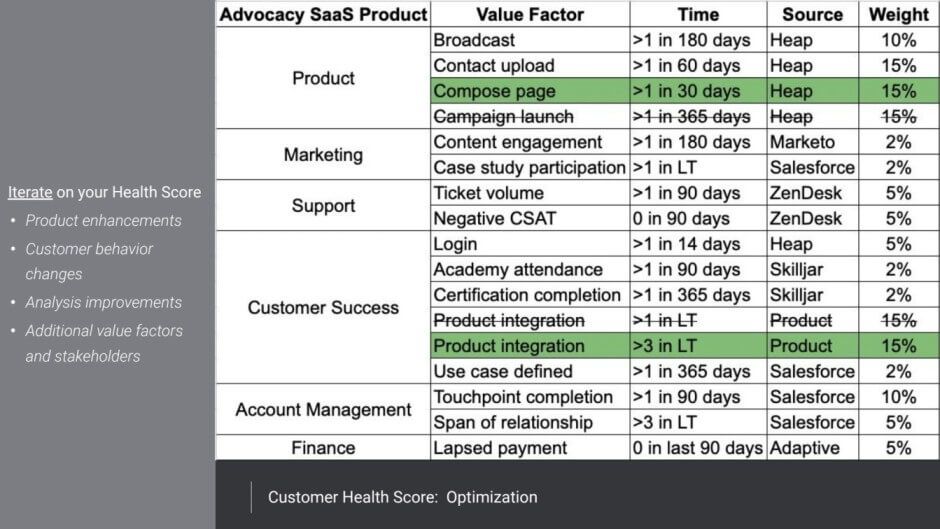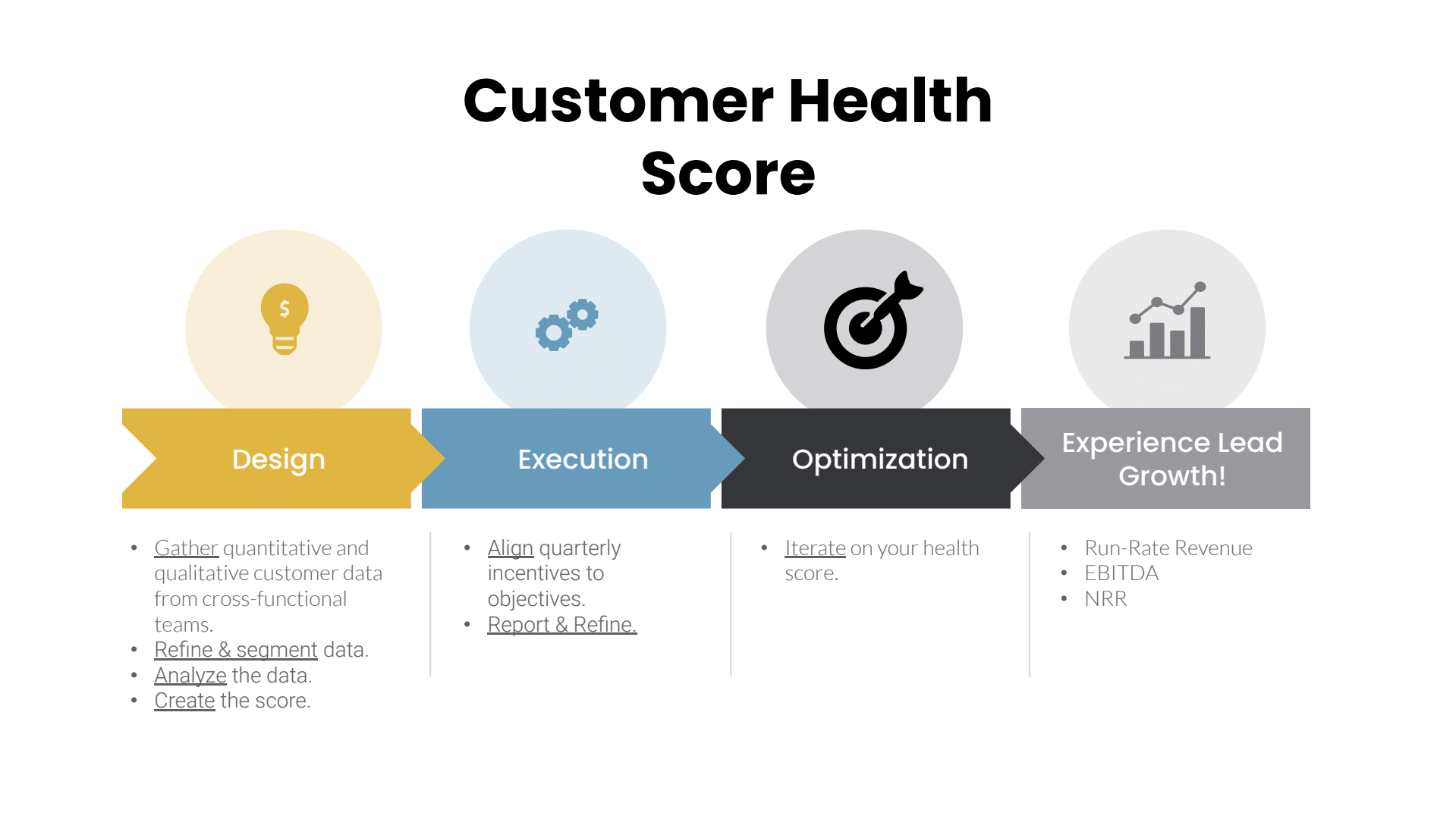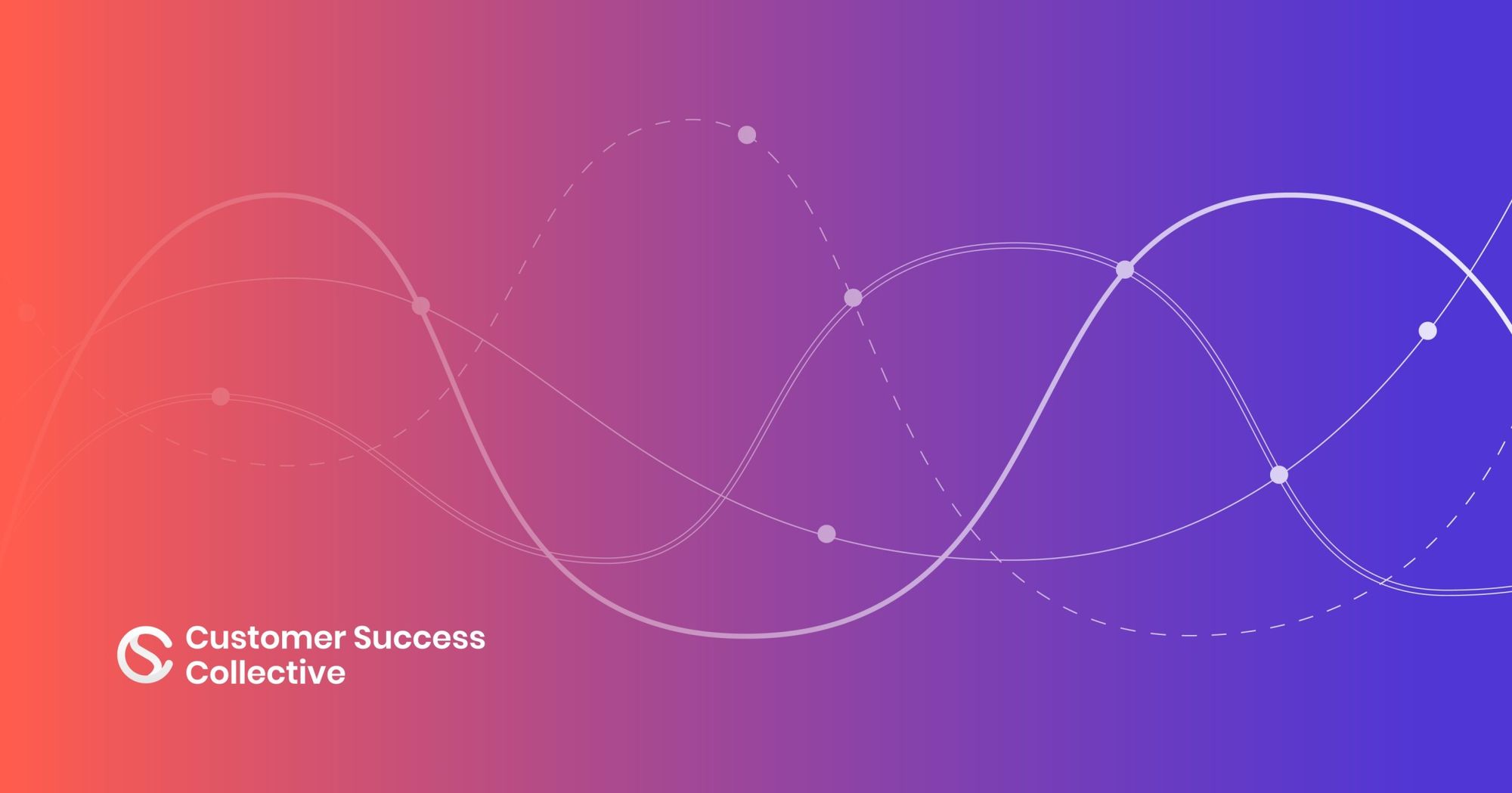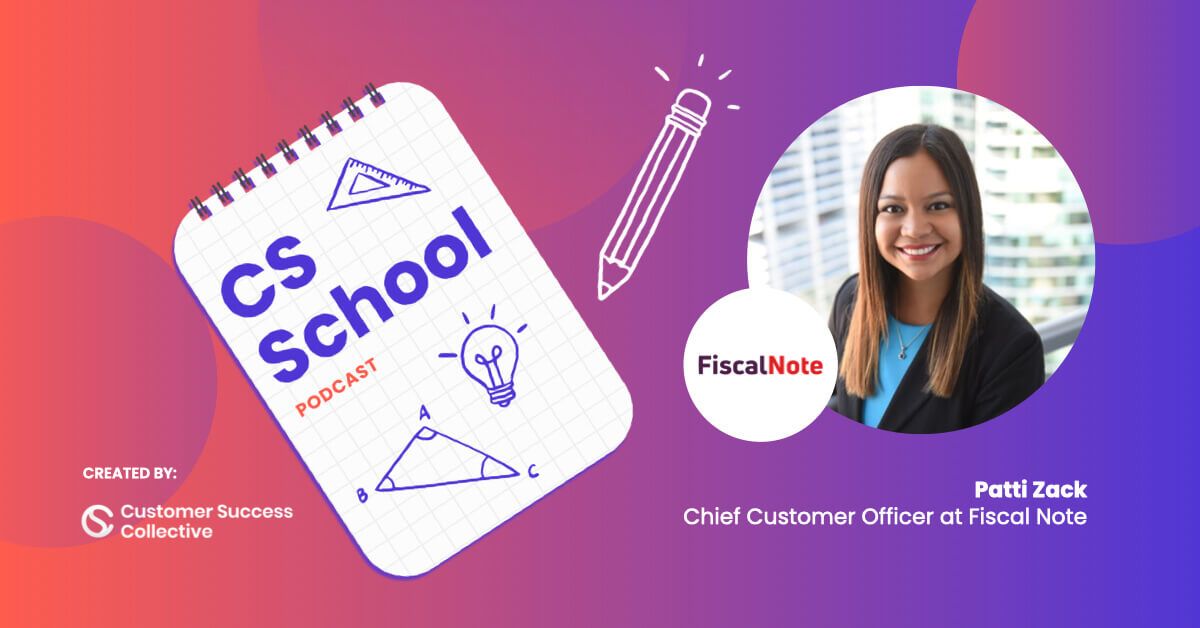My name is Patti Zack, and I was recently the Chief Customer Officer at FiscalNote. My entire professional journey has been in the realms of information and financial services, primarily at large-scale companies.
This article will cover several areas:
- An introduction to customer health
- An outline of prevalent industry issues
- The methods we used to develop customer health scores, and
- How FiscalNote integrated these into its teams' workflows.
Customer health: Enhancing organizational value and navigating challenges
So why do we regard customer health as a critical factor in enhancing organizational value? I’d like to share two quotes from a McKinsey article.
The first quote states:
"Compensating for the value of one lost customer can require the acquisition of three new customers."
This statement resonates with key decision-makers like CFOs. They understand the economic implications and the fact that it takes acquiring multiple new customers just to offset the loss of one.
The second quote is:
"80% of the value creation achieved by the world's most successful growth companies comes from their core business."
This significant value creation is mainly due to the unlocking of new revenue streams from existing customers. This realization should serve as an aligned North Star for your product, engineering, sales, and customer success leaders.
If there's one common goal to rally around, it should be driving 80% of your organization's value from your core business.
The problem when it comes to customer health
So, what’s the problem? The challenge arises in an environment with constrained resources, overwhelming data, and escalating pressure to meet objectives. Customer success leaders face the task of unifying efforts and prioritizing the most impactful areas. We often hear phrases like "work smarter, not harder" or "optimize your resources."
The first problem is identifying the customers in the most trouble – the ones emitting the “smoke signals.” Since it costs significantly more to acquire new customers than to retain existing ones, spotting these signals is crucial.
Secondly, if 80% of your organizational value stems from your existing customer base, the question becomes, “How do you cultivate and capitalize on this? How do you navigate the path to unlocking that value?”
Experience-led decline: Misaligned understanding of customer health
In my first few weeks as the Chief Customer Officer of FiscalNote, I decided to pose an essential question to my fellow leaders, each skilled in their respective areas:
"How do we identify healthy and unhealthy customers?"
I received a range of responses:
- Chief Marketing Officer: "It's all about engagement with our content. If they attend a webinar or interact with our content, we consider them healthy."
- Sales and Account Managers: "It's based on the strength of our relationship with the customer."
- Product team: “It’s based on product usage and the adoption of key features.”
- Success and support team: “It’s the customers' ability to articulate the value they received by the end of the contract or their CSAT score.”
- Finance: “It’s the contract value and prompt payment.”
After considering all these responses, I realized they were all correct (in their ways). However, this led to a significant issue.
Each of these functional teams had different perceptions of what constitutes a healthy customer and accordingly directed their resources towards initiatives they believed would create organizational value.
Unfortunately, this mismatch in understanding resulted in confusing customer journeys, misaligned efforts, inaccurate forecasts, wasted resources, and, worst of all, employee burnout due to unclear focus areas. Leaders were constantly shifting focus, causing what I call an "experience-led decline."
In this scenario, various customer-facing teams impact the customer in different ways, resulting in a suboptimal customer experience. It's not a product-led decline, or a customer-led decline, but an experience-led decline.
Establishing a customer health score
So, why should customer health be the conduit for experience-led growth? I dedicated my focus to establishing a customer health score. But I want to add a caveat here.
Before launching into this, FiscalNote already had a robust customer segmentation model. Our customers were segmented by product, our customer journey map was ready and optimized for each segment, and we had reached a point of scale where providing one-on-one white-glove service was no longer sustainable. We realized that not all customers could be treated the same.
We needed a "radar" to focus our resources where it mattered most. Now, if your company doesn't yet have a customer segmentation model, doesn't understand its customer journey, and hasn't reached scale, developing a health score might not be the right move. But for us, in our particular journey, the customer health score became the vessel to deliver experience-led growth.
The outcome? We ended up creating distinct and cohesive customer journeys. We aligned efforts and incentives, our forecasts became more accurate, we optimized resources, and our employees felt more empowered because they understood their connection to the bottom line.
4 steps of developing a proprietary customer health score
Let's establish what we mean by customer health. A customer health score is a company's own metric providing a quantifiable measure of a customer's complete experience. It's proprietary, meaning it's unique to your organization - Salesforce's customer health score wouldn't work for HubSpot.
It's quantifiable, enabling trend analysis and reporting which executives and board members appreciate. It's comprehensive, incorporating data points from various functions like finance, marketing, sales, and product to capture the entirety of the customer's experience.
I'll walk you through the four steps that go into designing a customer health score: collecting customer data, refining and segmenting the data, analyzing the data, and creating the score.
1. Gather both quantitative and qualitative customer data.
Ask your leaders important questions, like "What data aligns with the product value proposition?"
For example, at a company I used to work at called Refinitiv, our product, World Check, was designed to help customers conduct due diligence checks.
A crucial question for that product was, "How many customers have World Check matches?" because it directly related to the product's value proposition. However, when I asked our teams this, we found we weren't tracking this vital data. In this phase, you'll likely discover your blind spots.
2. Refine and segment your data
Ask, "What does the data tell us about a customer's health?" Sometimes more data is just more data; what we really want is meaningful insights about customer health.
For instance, at FiscalNote, we spent a lot of time tagging and naming product events. It turned out, this didn't provide any meaningful insights about customer health and was a waste of resources.
3. Analyze the data
We were able to select the most crucial data points from our cross-functional teams, which we termed "value factors", and assign a time and weight to each.
We backtested this by applying it to both customers who churned and our healthiest customers. We took this data and developed a straightforward, understandable score that all customer-facing teams could interpret.
4. Create the score
At Refinitiv, we used Gainsight, and at FiscalNote, we used ChurnZero. But it's also possible to create macros in Excel for smaller companies.
Whichever way you choose to go, the crucial thing is to take what you've gathered, refined, segmented, and analyzed to create your proprietary score.

Aligning team incentives with the customer health score
The execution phase starts with aligning incentives with your teams. The idea is that the signals we're getting from the customer health score should inform and direct the desired behaviors across teams.
As an example from my own team, we divided the variable component of our CSMs' compensation into three categories: customer health, education, and gross revenue retention. This gave managers the flexibility to direct their teams toward specific areas of focus on a quarterly basis.
For our Customer Success Managers (CSM), their variable compensation was split evenly between the customer health score and gross revenue retention. This ensured that they also had a stake in improving customer health.
If you're at a scale where your organizational structure includes directors, they should also be involved. When designing your customer health score, it's crucial to align it with the work done by different teams and reflect this in their compensation. This links their efforts directly to the company's goals, driving behaviors that promote experience-led growth.
For teams consisting of Account Managers, Account Executives, and CSMs, it's essential to align the customer health score to their efforts as they're the ones identifying opportunities within the existing customer base, which can often account for 80% of your value creation.
To illustrate, we structured our Account Managers' variable compensation with 25% based on customer health and 75% on net revenue retention, because we wanted to encourage expansion. This same method of aligning compensation with customer health and other key metrics was applied at all levels, from individual contributors to directors.
Executing and optimizing customer health score
The second step in the execution phase is reporting and refining. This is akin to "blocking and tackling" in football; it's all about being adaptable to changes in the game.
For instance, at FiscalNote, our products were seasonal, and customer usage varied throughout the year. This meant we had to adjust our customer health scores and quarterly goals to match these patterns, giving our managers and directors the flexibility to adapt to the way our business operates.
During this part of execution, we created "plays" and launched journeys, which are sequences of events that customer success managers use to guide their interactions with customers. We found opportunities to automate certain parts of this, ensuring that as our business and customers changed, we could amend the framework to fit our needs.
This involved continuous collaboration with cross-functional teams in marketing, product, and sales, and adjusting the levers we're pulling for experience-led growth to stay relevant to the business.

The last phase of designing a customer health score is optimization, which is all about iteration. For example, when our product changed at FiscalNote, we introduced a feature called the "Compose Page". We realized this new feature created a stronger value proposition for our customers, so we amended our health score to include it.
Additionally, we noticed that our most successful customers were those integrating at least three other products with our advocacy product. Such insights show how crucial it is for you as a leader to realize that a customer health score is a living, breathing thing. It needs to continually evolve and adapt to serve your business effectively.
The lifecycle of customer health score
So there are three main phases in designing your customer health score:
- The design phase,
- The execution phase, and
- The optimization phase.

Design phase
Start by gathering qualitative and quantitative customer data from all your teams. Once you have the data, refine it and segment it to focus on the most relevant parts. The next step is to analyze this data, working out what is most important and how it might impact your customer's health score. Finally, take this analysis and use it to create your proprietary customer health score.
Execution phase
Once you've established your radar, you need to make it operational. Start by aligning team incentives with the customer health score, ensuring everyone's efforts contribute to improving customer health. Then, continually report on and refine the score, adjusting to changing circumstances, customer behavior, or business goals.
Optimization phase
The key is to iterate and adapt your customer health score over time. As your product evolves or as you discover more about what makes your customers successful, update your score to reflect these new insights.
Implementing a comprehensive customer health score ultimately supports three crucial business metrics that your executives and board members care about:
- Run-rate revenue,
- Profitability, and
- Net revenue retention.
By tying your work directly to these critical outcomes, you're able to speak the same language as your company's leaders, showing them how customer success operations contribute directly to the company's bottom line.

Applying customer health scores: A case study
In this section, we’ll look at how we can apply customer health scores to the workflow of our team members, and see a real-life example of its application to an advocacy solution product, Voter Voice.
Voter Voice's primary value proposition is enabling customers who advocate on behalf of their own clients to contact their constituents. There was an instance with a US advocacy organization focused on real estate advocates.
Before we had a health score, the account team would typically review their book of business 90 days prior to renewal and try to make corrections. However, often, it was too late to make a significant impact.
Using the health score, the account team saw that this client was in the red zone. This client had not uploaded contacts, had not integrated a desired product, had given a negative CSAT score, and had a strained relationship. By putting this score in front of the team members, they were able to take action.
The different cross-functional teams started examining what was going on. The customer success manager discovered that a new admin had been added but was never onboarded, hence, didn't know how to upload contacts or other operational aspects.
We also found that a third-party partner's product integration had failed. The Account Manager realized that the client's point of contact had left without any notice, and the client had been using lobbyists to stay ahead of changing regulations – an issue that one of our products could resolve.
On the marketing side, we found out that the U.S.-based client was receiving non-U.S. content and daily emails, which led to a poor customer experience. The product team found a number of unresolved bugs.
All of these issues resulted in a steep decline in customer experience. Armed with this insight, we developed a three-step plan to correct these issues. This involved redeploying education and implementation, correcting the issue of irrelevant content, and improving communication transparency. Each functional team member-owned a part of this plan.
One noteworthy instance was when the Customer Success Manager utilized a support ticket as a reason to reach out to the dissatisfied customer.
This conversation wouldn't have been possible without the runway and signal provided by our customer health score. It facilitated timely and effective interventions to improve customer experience and satisfaction, highlighting the vital role of a well-implemented health score system.

Persuading the C-suite to adopt a customer health score approach
Sometimes the proposed plan can feel overwhelming, but there are minimal actions you can implement to begin the process.
The primary challenge in convincing the leadership that customer success should be a resource allocation priority involves linking it directly to revenue.
Executive leaders care deeply about organizational value, and their two main questions typically revolve around how we can increase customer spend and improve employee experiences. Enhancing these two aspects directly feeds into the organization's value. Hence, the importance of aligning customer success with these outcomes.
If the comprehensive plan to implement a customer health score feels overwhelming, I would suggest starting by ensuring data accuracy. Even if it's just two or three key metrics you want to include in your customer health score, bring them to the forefront.
Let's take an example of a company using our Voter Voice tool to launch campaigns. If your primary health metric is whether the customer has launched a campaign, make it the focus. Make sure all team members understand that this particular activity is crucial for our customer health score, as it is directly linked to the promise we made when they purchased our software.
Remember, your customers are outsourcing certain tasks to your software. Being able to articulate what those tasks are and why they're important can paint a clear picture of customer expectations. Therefore, identify that pivotal task and find the data that supports its importance. This simple step will help start the process of creating and implementing a customer health score.
Key takeaways for designing a customer health score
Experience-led growth
It's essential to let your customer health score guide your organization toward experience-led growth. As McKinsey pointed out, increasing customer satisfaction by just 20% can lead to a 15 to 25% increase in cross-selling rates. This is something that CEOs and organizational leaders care about deeply.
Designing a customer health score
I’ve walked you through the process of how to design a customer health score, from the design stage to execution and optimization. By measuring what truly matters, you can start advocating for the creation of a customer health score within your own organization today. Providing quantifiable success markers to your customers can drastically improve their longevity with your company.
Drive alignment
Lastly, driving alignment is crucial for your organization. An old saying goes, "If everyone is moving forward together, then success takes care of itself." It's not just about developing a customer health score, it's about using it to align all parts of your organization, driving forward in the same direction for success.
This article is based on a presentation given by Patti at the Customer Success Festival in Las Vegas, in May 2023.
Catch up on this presentation, and others, using our OnDemand service. For more exclusive content, visit your membership dashboard.
Measure your way to success
Mastering customer success metrics is critical for any Customer Success Manager. With customer success heavily dependent on analyzing customer data, knowing how to best implement metrics is very much a quintessential skill for a CSM.
This is where we come in.
Customer Success Metrics Certified: Masters course is your golden ticket to a treasure trove of insights that'll help you present your findings to key internal stakeholders to promote the benefits of customer success.
🌟 5 modules
📝 40 exam questions
🔖 6 templates
📚 3+ hours of content
🎖 Official certification
⏰ 100% self-paced.
With intel from CS leaders plying their trade at companies such as LinkedIn, Seek, and Chili Piper, you'll be implementing CS metrics in your day-to-day work in no time.



 Follow us on LinkedIn
Follow us on LinkedIn










